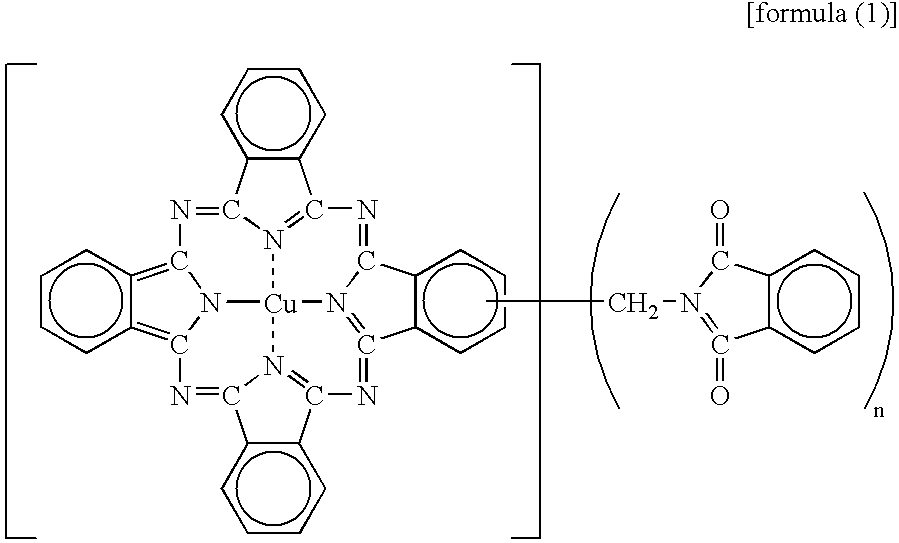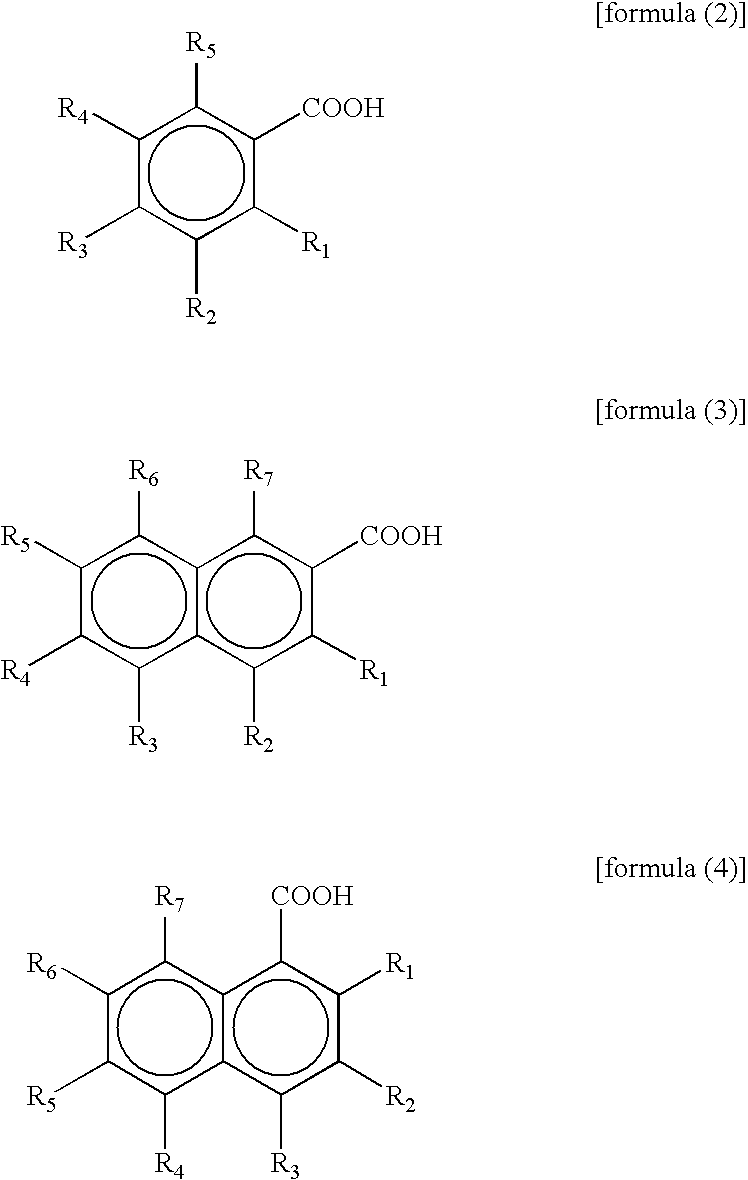Toner
a technology of toner and pigment, applied in the field of toner, can solve the problems of resin exerting large influence, color reproduction may be deteriorated, color drift may occur, etc., and achieve the effects of excellent low-temperature fixing property, color mixing property, and high-temperature offset resistan
- Summary
- Abstract
- Description
- Claims
- Application Information
AI Technical Summary
Benefits of technology
Problems solved by technology
Method used
Image
Examples
production example 1
(Production Example 1 of Polyester Resin)
[0172]3.6 mol of polyoxypropylene (2.2)-2,2-bis(4-hydroxyphenyl)propane, 1.6 mol of polyoxyethylene (2.2)-2,2-bis(4-hydroxyphenyl) propane, 1.7 mol of terephthalic acid, 1.1 mol of anhydrous trimellitic acid, 2.4 mol of fumaric acid, and 0.1 g of dibutyltin oxide were placed in a four-neck flask (4 litters in volume) made of glass. Then, a thermometer, a stirring rod, a condenser, and a nitrogen-introduction pipe were mounted on the flask, followed by placing the flask in a mantle heater. After that, the flask was heated up to 215° C. under nitrogen atmosphere to allow the mixture to react for 5 hours, thereby obtaining a polyester resin. The results of the molecular weight measurement with GPC are listed in Table 3.
(Production Example 1 of Vinyl Resin)
[0173]Placed in a four-neck flask (3 litters in volume) equipped with a thermometer, a stainless steel stirring rod, a flow-down system condenser, and a nitrogen introduction tube were 1,000 ml...
example 1
[0182]
Hybrid resin100 parts by massPhthalocyanine pigment 4 parts by mass(cyan colorant)Aluminum complex of di-tert-butyl salicylic acid 3 parts by mass(Negative charge controlling agent)Wax (a) 4 parts by mass
[0183]The above compounds were sufficiently premixed with a Henschel mixer and then fusion kneading was carried out with a twin-screw extrusion kneader. After cooling, the mixture was roughly pulverized into particles having a diameter of approximately 1 to 2 mm. Subsequently, the particles were further pulverized into fine particles with an air-jet system pulverizer. Then, the resulting fine particles were classified, to thereby obtain non-magnetic cyan toner particles having a weight-average particle diameter of 6.1 μm and negative triboelectrific charging property.
[0184]Next, 100 parts by mass of the cyan toner particles, 1.0 parts by mass of titanium compound-containing silica particles 1, and 0.5 parts by mass of hydrophobic alumina fine particles a as combined inorganic ...
example 2
[0187]A printing endurance test was performed by the same method as that of Example 1, except that the titanium compound-containing silica particles 2 were used.
PUM
 Login to View More
Login to View More Abstract
Description
Claims
Application Information
 Login to View More
Login to View More - R&D
- Intellectual Property
- Life Sciences
- Materials
- Tech Scout
- Unparalleled Data Quality
- Higher Quality Content
- 60% Fewer Hallucinations
Browse by: Latest US Patents, China's latest patents, Technical Efficacy Thesaurus, Application Domain, Technology Topic, Popular Technical Reports.
© 2025 PatSnap. All rights reserved.Legal|Privacy policy|Modern Slavery Act Transparency Statement|Sitemap|About US| Contact US: help@patsnap.com


